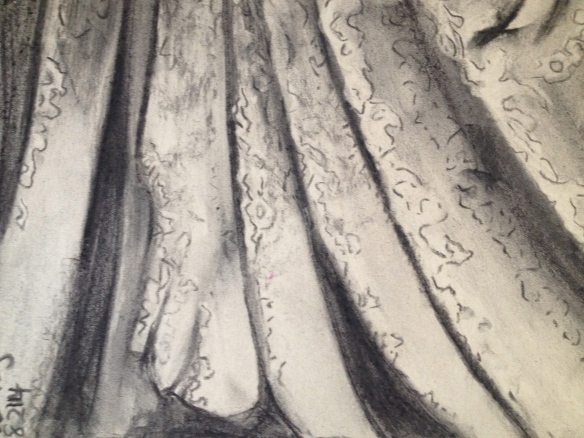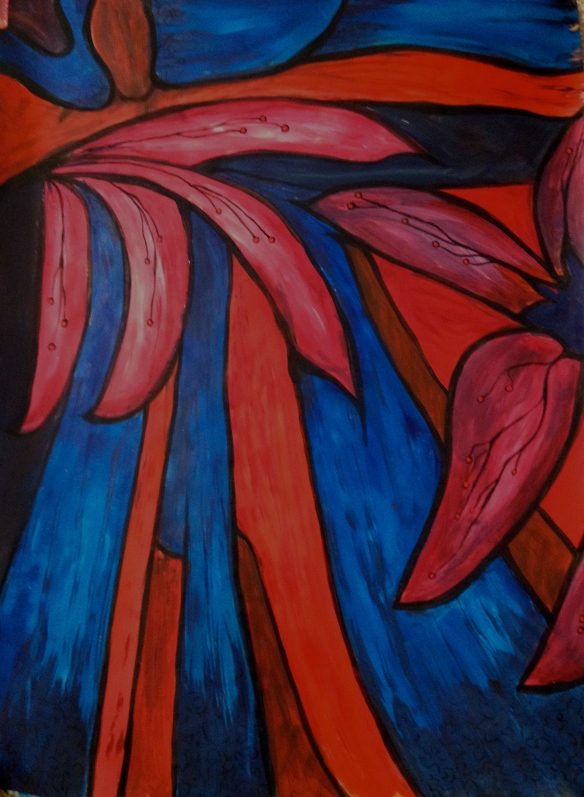I’ve had time off for frivolous behaviour with the grandhearts but now it’s back to some pleasurable work. When I have time out, it gets me into my head and thinking overtime which is not always a bad thing. This implies that sometimes it is but that topic is not the subject this post.
I was cruising Facebook and looking at all the lovely art and couldn’t help noticing all the pretty young female faces with model proportions in the work, vapid faces I thought, and for the most part exaggerated in their appealing features . . . big eyes, full lips, long flowing hair, a body that doesn’t reflect the norm. Now please don’t misunderstand me. I have nothing against these images as such and most are beautifully executed however it was the images that got me thinking about how women are represented in the media and how we accept and sometimes perpetuate expectations and myths about womanhood.
As a child I thought I was something less, less that worthy and the measure of worth was masculinity. My mother always said she should have been a career woman but was not allowed to work . . . she grew up in a time when her parent believed that ‘ladies’ don’t work. Strangely, I was one of the few children in my class who had a mother who did work, who had her own business. This didn’t mean that she embraced gender equity she unconsciously perpetuated the gender stereotypes of her time. Males ran everything and if a woman had managed to accumulate any power it was done by stealth or she was an exception. My mother was an exception, she could swing a hammer alongside her carpenter brother and led me to believe that if a male could do it then so could I.
Before this turns into a treatise on the roles we are socialised into let me give you a couple of examples of how women are still put down and how we put ourselves down.
If a woman is strong and assertive she’s often described as a bitch. I’m strong and assertive when I need to be but I don’t have enough nipples to be a bitch, although my very sweet-natured dog does. Quinn McDonald wrote a post on her blog recently entitled Words Worth Dumping where she talked about a couple of terms that de-value women and that confirmed for me that it’s about time we started protesting about their use and certainly stop using them ourselves.
A while back a blogger, I forget who, talked about her need to develop more courage and strength and ended by writing she was going to grow a set of balls . . . I was appalled! Grow a backbone yes, but why balls? Was her goal to be more masculine or to be a strong woman? And believing that men have some superior source of inner strength is ludicrous! I’m sure she doesn’t but she has, by her language, said that as a woman she isn’t as worthy as a man. And no, I am definitely not anti-male, I love good men in the same way I love good women and what is more I raised a very good man.
As a child I hated being called a tomboy, a Jack of all trades, told that I should have been a boy. And why was I? I loved being outside, climbing trees, playing up on the hillsides near our house, messing around in the vegetable garden with my father, using carpentry tools . . . but I was not a boy nor did I aspire to be one so why did adults define me as some almost-boy? Even then, as a quite young child I was aware that 1) language was powerful and 2) gender bias was not weighted in my favour!
And don’t insult elderly women by calling a dithering, ineffectual man an ‘old woman’ nor a boy who can’t throw a ball well that he throws like a girl, nor a sensitive young man a ‘girl’s blouse’ (I’ll accept that one is seldom heard these days but there’s bound to be a modern equivalent). Have you seen this video? It tells us that young girls believe in their strength but women collude with the lie. “Throws like a girl” is a cultural bias, one women perpetuate against their own gender, and one that the MythBusters spent time disproving.
It is only by standing tall, learning to do things for yourself (I had a colleague who couldn’t even screw the inside of the french press back together when it worked itself loose because her husband “did that sort of thing” . . . that sort of thing? Practical, basic, screwing a small part back together? Give me strength!
So, my point. Watch your tongue, listen to how you and others language your gender, be proud to be a woman (I am not a girl, I am a woman and woman friends, not girlfriends) and please, include mature faces, not the rich and famous cosmeticly enhanced but real, woman-next-door faces in your work.
And here’s a little reward for reading this far: a not-yet-complete free motion embroidery experiment. I’d hate you to think I’ve only been walking the beach seething.

free motion embroidery – a not-yet-complete experiment.










